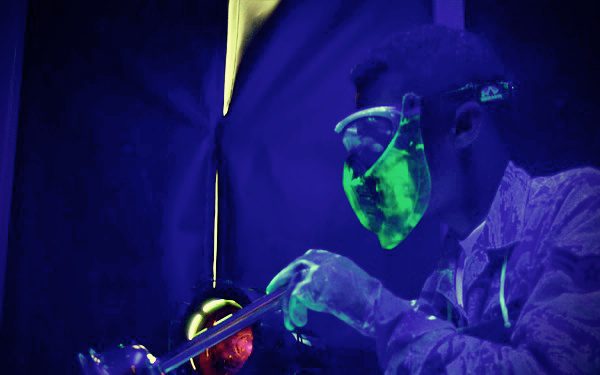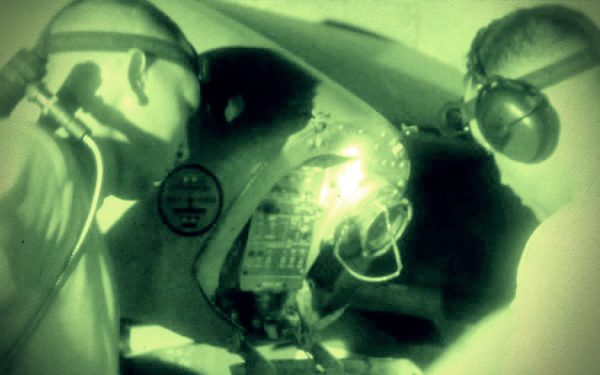Overview of the confrontation clause:
The Confrontation Clause of the Sixth Amendment to the United States Constitution provides that “in all criminal prosecutions, the accused shall enjoy the right…to be confronted with the witnesses against him.” Generally, the right is to have a face-to-face confrontation with witnesses who are offering testimonial evidence against the accused in the form of cross-examination during a trial. The Fourteenth Amendment makes the right to confrontation applicable to the states and not just the federal government. The right only applies to criminal prosecutions, not civil cases or other proceedings.
Roots of the Confrontation Clause
The Confrontation Clause has its roots in both English common law, protecting the right of cross-examination, and Roman law, which guaranteed persons accused of a crime the right to look their accusers in the eye. In noting the right’s long history, the United States Supreme Court has cited Acts of the Apostles 25:16, which reports the Roman governor Porcius Festus, discussing the proper treatment of his prisoner Paul: “It is not the manner of the Romans to deliver any man up to die before the accused has met his accusers face-to-face, and has been given a chance to defend himself against the charges.” It is also cited in Shakespeare’s Richard II, Blackstone‘s treatises, and statutes.
- Appellate review
- Confrontation Clause Analysis Chart
- Introduction
- Literal Face-to-Face Confrontation: The Admissibility of Out-of-Court Statements
- Restrictions on Confrontation Imposed by Law
- Satisfying the Confrontation Clause Through Opportunity to Cross-Examine, Waiver, and Forfeiture
- Satisfying the Confrontation Clause Through Opportunity to Cross-Examine, Waiver, and Forfeiture
OPINION OF THE COURT CRAWFORD V. WASHINGTON, 541 U. S. (2004)
SUPREME COURT OF THE UNITED STATES – NO. 02-9410
MICHAEL D. CRAWFORD, PETITIONER v. WASHINGTON
on writ of certiorari to the supreme court of Washington
[March 8, 2004]
Justice Scalia delivered the opinion of the Court.
Petitioner Michael Crawford stabbed a man who allegedly tried to rape his wife, Sylvia. At his trial, the State played for the jury Sylvia’s tape-recorded statement to the police describing the stabbing, even though he had no opportunity for cross-examination. The Washington Supreme Court upheld the petitioner’s conviction after determining that Sylvia’s statement was reliable. The question presented is whether this procedure complied with the Sixth Amendment’s guarantee that, “[i]n all criminal prosecutions, the accused shall enjoy the right … to be confronted with the witnesses against him.”
I
On August 5, 1999, Kenneth Lee was stabbed at his apartment. Police arrested the petitioner later that night. After giving the petitioner and his wife Miranda warnings, detectives interrogated each of them twice. Petitioner eventually confessed that he and Sylvia had gone in search of Lee because he was upset over an earlier incident in which Lee had tried to rape her. The two had found Lee at his apartment, and a fight ensued in which Lee was stabbed in the torso and the petitioner’s hand was cut.
Petitioner gave the following account of the fight:
“Q. Okay. Did you ever see anything in [Lee’s] hands?
“A. I think so, but I’m not positive.
“Q. Okay, when you think so, what do you mean by that?
“A. I coulda swore I saw him goin’ for somethin’ before, right before everything happened. He was like reachin’, fiddlin’ around down here and stuff … and I just … I don’t know, I think, this is just a possibility, but I think, I think that he pulled somethin’ out and I grabbed for it and that’s how I got cut … but I’m not positive. I, I, my mind goes blank when things like this happen. I mean, I just, I remember things wrong, I remember things that just don’t, don’t make sense to me later.” App. 155 (punctuation added).
Sylvia generally corroborated petitioner’s story about the events leading up to the fight, but her account of the fight itself was arguably different—particularly with respect to whether Lee had drawn a weapon before petitioner assaulted him:
“Q. Did Kenny do anything to fight back from this assault?
“A. (pausing) I know he reached into his pocket … or somethin’ … I don’t know what.
“Q. After he was stabbed?
“A. He saw Michael coming up. He lifted his hand … his chest open, he might [have] went to go strike his hand out or something and then (inaudible).
“Q. Okay, you, you gotta speak up.
“A. Okay, he lifted his hand over his head maybe to strike Michael’s hand down or something and then he put his hands in his … put his right hand in his right pocket … took a step back … Michael proceeded to stab him … then his hands were like … how do you explain this … open arms … with his hands open and he fell down … and we ran (describing subject holding hands open, palms toward assailant).
“Q. Okay, when he’s standing there with his open hands, you’re talking about Kenny, correct?
“A. Yeah, after, after the fact, yes.
“Q. Did you see anything in his hands at that point?
“A. (pausing) um um (no).” Id., at 137 (punctuation added).
The State charged petitioner with assault and attempted murder. At trial, he claimed self-defense. Sylvia did not testify because of the state marital privilege, which generally bars a spouse from testifying without the other spouse’s consent. See Wash. Rev. Code §5.60.060(1) (1994). In Washington, this privilege does not extend to a spouse’s out-of-court statements admissible under a hearsay exception, see State v. Burden, 120 Wash. 2d 371, 377, 841 P. 2d 758, 761 (1992), so the State sought to introduce Sylvia’s tape-recorded statements to the police as evidence that the stabbing was not in self-defense. Noting that Sylvia had admitted she led petitioner to Lee’s apartment and thus had facilitated the assault, the State invoked the hearsay exception for statements against penal interest, Wash. Rule Evid. 804(b)(3) (2003).
Petitioner countered that state law notwithstanding, admitting the evidence would violate his federal constitutional right to be “confronted with the witnesses against him.” Amdt. 6. According to our description of that right in Ohio v. Roberts, 448 U. S. 56 (1980), it does not bar admission of an unavailable witness’s statement against a criminal defendant if the statement bears “adequate ‘indicia of reliability.’ ” Id., at 66. To meet that test, the evidence must either fall within a “firmly rooted hearsay exception” or bear “particularized guarantees of trustworthiness.” Ibid. The trial court here admitted the statement on the latter ground, offering several reasons why it was trustworthy: Sylvia was not shifting blame but rather corroborating her husband’s story that he acted in self-defense or “justified reprisal”; she had direct knowledge as an eyewitness; she was describing recent events, and she was being questioned by a “neutral” law enforcement officer. App. 76–77. The prosecution played the tape for the jury and relied on it in closing, arguing that it was “damning evidence” that “completely refutes [petitioner’s] claim of self-defense.” Tr. 468 (Oct. 21, 1999). The jury convicted the petitioner of assault.
The Washington Court of Appeals reversed. It applied a nine-factor test to determine whether Sylvia’s statement bore particularized guarantees of trustworthiness, and noted several reasons why it did not: The statement contradicted one she had previously given; it was made in response to specific questions, and at one point she admitted she had shut her eyes during the stabbing. The court considered and rejected the State’s argument that Sylvia’s statement was reliable because it coincided with petitioners to such a degree that the two “interlocked.” The court determined that, although the two statements agreed about the events leading up to the stabbing, they differed on the issue crucial to petitioner’s self-defense claim: “[Petitioner’s] version asserts that Lee may have had something in his hand when he stabbed him, but Sylvia’s version has Lee grabbing for something only after he has been stabbed.” App. 32.
The Washington Supreme Court reinstated the conviction, unanimously concluding that, although Sylvia’s statement did not fall under a firmly rooted hearsay exception, it bore guarantees of trustworthiness: “ ‘[W]hen a codefendant’s confession is virtually identical [to, i.e., interlocks with,] that of a defendant, it may be deemed reliable.’ ” 147 Wash. 2d 424, 437, 54 P. 3d 656, 663 (2002) (quoting State v. Rice, 120 Wash. 2d 549, 570, 844 P. 2d 416, 427 (1993)). The court explained:
“Although the Court of Appeals concluded that the statements were contradictory, upon closer inspection they appear to overlap.
“[B]oth of the Crawfords’ statements indicate that Lee was possibly grabbing for a weapon, but they are equally unsure when this event may have taken place. They are also equally unsure how Michael received the cut on his hand, leading the court to question when, if ever, Lee possessed a weapon. In this respect, they overlap.
“[N]either Michael or Sylvia clearly stated that Lee had a weapon in hand from which Michael was simply defending himself. And it is this omission by both that interlocks the statements and makes Sylvia’s statement reliable.” 147 Wash. 2d, at 438– 439, 54 P. 3d, at 664 (internal quotation marks omitted).[Footnote 1]
We granted certiorari to determine whether the State’s use of Sylvia’s statement violated the Confrontation Clause. 539 U. S. 914 (2003).
II
The Sixth Amendment’s Confrontation Clause provides that, “[i]n all criminal prosecutions, the accused shall enjoy the right … to be confronted with the witnesses against him.” We have held that this bedrock procedural guarantee applies to both federal and state prosecutions. Pointer v. Texas, 380 U. S. 400, 406 (1965). As noted above, Roberts says that an unavailable witness’s out-of-court statement may be admitted so long as it has adequate indicia of reliability—i.e., falls within a “firmly rooted hearsay exception” or bears “particularized guarantees of trustworthiness.” 448 U. S., at 66. Petitioner argues that this test strays from the original meaning of the Confrontation Clause and urges us to reconsider it.
A
The Constitution’s text does not alone resolve this case. One could plausibly read “witnesses against” a defendant to mean those who actually testify at trial, cf. Woodsides v. State, 3 Miss. 655, 664–665 (1837), those whose statements are offered at trial, see 3 J. Wigmore, Evidence §1397, p. 104 (2d ed. 1923) (hereinafter Wigmore), or something in-between, see infra, at 15–16. We must therefore turn to the historical background of the Clause to understand its meaning.
The right to confront one’s accusers is a concept that dates back to Roman times. See Coy v. Iowa, 487 U. S. 1012, 1015 (1988); Herrmann & Speer, Facing the Accuser: Ancient and Medieval Precursors of the Confrontation Clause, 34 Va. J. Int’l L. 481 (1994). The founding generation’s immediate source of the concept, however, was a common law. English common law has long differed from continental civil law in regard to the manner in which witnesses give testimony in criminal trials. The common-law tradition is one of live testimony in court subject to adversarial testing, while the civil law condones examination in private by judicial officers. See 3 W. Blackstone, Commentaries on the Laws of England 373–374 (1768).
Nonetheless, England at times adopted elements of the civil-law practice. Justices of the peace or other officials examined suspects and witnesses before trial. These examinations were sometimes read in court in lieu of live testimony, a practice that “occasioned frequent demands by the prisoner to have his ‘accusers,’ i.e. the witnesses against him, brought before him face to face.” 1 J. Stephen, History of the Criminal Law of England 326 (1883). In some cases, these demands were refused. See 9 W. Holdsworth, History of English Law 216–217, 228 (3d ed. 1944); e.g., Raleigh’s Case, 2 How. St. Tr. 1, 15–16, 24 (1603); Throckmorton’s Case, 1 How. St. Tr. 869, 875–876 (1554); cf. Lilburn’s Case, 3 How. St. Tr. 1315, 1318–1322, 1329 (Star Chamber 1637).
Pretrial examinations became routine under two statutes passed during the reign of Queen Mary in the 16th century, 1 & 2 Phil. & M., c. 13 (1554), and 2 & 3 id., c. 10 (1555). These Marian bail and committal statutes required justices of the peace to examine suspects and witnesses in felony cases and to certify the results to the court. It is doubtful that the original purpose of the examinations was to produce evidence admissible at trial. See J. Langbein, Prosecuting Crime in the Renaissance 21–34 (1974). Whatever the original purpose, however, they came to be used as evidence in some cases, see 2 M. Hale, Pleas of the Crown 284 (1736), resulting in an adoption of continental procedure. See 4 Holdsworth, supra, at 528–530.
The most notorious instances of civil-law examination occurred in the great political trials of the 16th and 17th centuries. One such was the 1603 trial of Sir Walter Raleigh for treason. Lord Cobham, Raleigh’s alleged accomplice, had implicated him in an examination before the Privy Council and in a letter. At Raleigh’s trial, these were read to the jury. Raleigh argued that Cobham had lied to save himself: “Cobham is absolutely in the King’s mercy; to excuse me cannot avail him; by accusing me he may hope for favour.” 1 D. Jardine, Criminal Trials 435 (1832). Suspecting that Cobham would recant, Raleigh demanded that the judges call him to appear, arguing that “[t]he Proof of the Common Law is by witness and jury: let Cobham be here, let him speak it. Call my accuser before my face … .” 2 How. St. Tr., at 15–16. The judges refused, id., at 24, and, despite Raleigh’s protestations that he was being tried “by the Spanish Inquisition,” id., at 15, the jury convicted, and Raleigh was sentenced to death.
One of Raleigh’s trial judges later lamented that “ ‘the justice of England has never been so degraded and injured as by the condemnation of Sir Walter Raleigh.’ ” 1 Jardine, supra, at 520. Through a series of statutory and judicial reforms, English law developed a right of confrontation that limited these abuses. for example, treason statutes required witnesses to confront the accused “face to face” at his arraignment. E.g., 13 Car. 2, c. 1, §5 (1661); see 1 Hale, supra, at 306. Courts, meanwhile, developed relatively strict rules of unavailability, admitting examinations only if the witness was demonstrably unable to testify in person. See Lord Morley’s Case, 6 How. St. Tr. 769, 770–771 (H. L. 1666); 2 Hale, supra, at 284; 1 Stephen, supra, at 358. Several authorities also stated that a suspect’s confession could be admitted only against himself, and not against others he implicated. See 2 W. Hawkins, Pleas of the Crown c. 46, §3, pp. 603–604 (T. Leach 6th ed. 1787); 1 Hale, supra, at 585, n. (k); 1 G. Gilbert, Evidence 216 (C. Lofft ed. 1791); cf. Tong’s Case, Kel. J. 17, 18, 84 Eng. Rep. 1061, 1062 (1662) (treason). But see King v. Westbeer, 1 Leach 12, 168 Eng. Rep. 108, 109 (1739).
One recurring question was whether the admissibility of an unavailable witness’s pretrial examination depended on whether the defendant had had an opportunity to cross-examine him. In 1696, the Court of King’s Bench answered this question in the affirmative, in the widely reported misdemeanor libel case of King v. Paine, 5 Mod. 163, 87 Eng. Rep. 584. The court ruled that, even though a witness was dead, his examination was not admissible where “the defendant not being present when [it was] taken before the mayor … had lost the benefit of a cross-examination.” Id., at 165, 87 Eng. Rep., at 585. The question was also debated at length during the infamous proceedings against Sir John Fenwick on a bill of attainder. Fenwick’s counsel objected to admitting the examination of a witness who had been spirited away, on the ground that Fenwick had had no opportunity to cross-examine. See Fenwick’s Case, 13 How. St. Tr. 537, 591–592 (H. C. 1696) (Powys) (“[T]hat which they would offer is something that Mr. Goodman hath sworn when he was examined … ; sir J. F. not being present or privy, and no opportunity given to cross-examine the person; and I conceive that cannot be offered as evidence …”); id., at 592 (Shower) (“[N]o deposition of a person can be read, though beyond sea, unless in cases where the party it is to be read against was privy to the examination, and might have cross-examined him … . [O]ur constitution is, that the person shall see his accuser”). The examination was nonetheless admitted on a closely divided vote after several of those present opined that the common-law rules of procedure did not apply to parliamentary attainder proceedings—one speaker even admitting that the evidence would normally be inadmissible. See id., at 603–604 (Williamson); id., at 604–605 (Chancellor of the Exchequer); id., at 607; 3 Wigmore §1364, at 22–23, n. 54. Fenwick was condemned, but the proceedings “must have burned into the general consciousness the vital importance of the rule securing the right of cross-examination.” Id., §1364, at 22; cf. Carmell v. Texas, 529 U. S. 513, 526–530 (2000).
Paine had settled the rule requiring a prior opportunity for cross-examination as a matter of common law, but some doubts remained over whether the Marian statutes prescribed an exception to it in felony cases. The statutes did not identify the circumstances under which examinations were admissible, see 1 & 2 Phil. & M., c. 13 (1554); 2 & 3 id., c. 10 (1555), and some inferred that no prior opportunity for cross-examination was required. See Westbeer, supra, at 12, 168 Eng. Rep., at 109; compare Fenwick’s Case, 13 How. St. Tr., at 596 (Sloane), with id., at 602 (Musgrave). Many who expressed this view acknowledged that it meant the statutes were in derogation of the common law. See King v. Eriswell, 3 T. R. 707, 710, 100 Eng. Rep. 815, 817 (K. B. 1790) (Grose, J.) (dicta); id., at 722–723, 100 Eng. Rep., at 823–824 (Kenyon, C. J.) (same); compare 1 Gilbert, Evidence, at 215 (admissible only “by Force ‘of the Statute’ ”), with id., at 65. Nevertheless, by 1791 (the year the Sixth Amendment was ratified), courts were applying the cross-examination rule even to examinations by justices of the peace in felony cases. See King v. Dingler, 2 Leach 561, 562–563, 168 Eng. Rep. 383, 383–384 (1791); King v. Woodcock, 1 Leach 500, 502–504, 168 Eng. Rep. 352, 353 (1789); cf. King v. Radbourne, 1 Leach 457, 459–461, 168 Eng. Rep. 330, 331–332 (1787); 3 Wigmore §1364, at 23. Early 19th-century treatises confirm that requirement. See 1 T. Starkie, Evidence 95 (1826); 2 id., at 484–492; T. Peake, Evidence 63–64 (3d ed. 1808). When Parliament amended the statutes in 1848 to make the requirement explicit, see 11 & 12 Vict., c. 42, §17, the change merely “introduced in terms” what was already afforded the defendant “by the equitable construction of the law.” Queen v. Beeston, 29 Eng. L. & Eq. R. 527, 529 (Ct. Crim. App. 1854) (Jervis, C. J.).[Footnote 2]
B
Controversial examination practices were also used in the Colonies. Early in the 18th century, for example, the Virginia Council protested against the Governor for having “privately issued several commissions to examine witnesses against particular men ex parte,” complaining that “the person accused is not admitted to be confronted with, or defend himself against his defamers.” A Memorial concerning the Maladministrations of His Excellency Francis Nicholson, reprinted in 9 English Historical Documents 253, 257 (D. Douglas ed. 1955). A decade before the Revolution, England gave jurisdiction over Stamp Act offenses to the admiralty courts, which followed civil-law rather than common-law procedures and thus routinely took testimony by deposition or private judicial examination. See 5 Geo. 3, c. 12, §57 (1765); Pollitt, The Right of Confrontation: its History and Modern Dress, 8 J. Pub. L. 381, 396–397 (1959). Colonial representatives protested that the Act subverted their rights “by extending the jurisdiction of the courts of admiralty beyond its ancient limits.” Resolutions of the Stamp Act Congress §8th (Oct. 19, 1765), reprinted in Sources of Our Liberties 270, 271 (R. Perry & J. Cooper eds. 1959). John Adams, defending a merchant in a high-profile admiralty case, argued: “Examinations of witnesses upon Interrogatories, are only by the Civil Law. Interrogatories are unknown at common Law, and Englishmen and common Lawyers have an aversion to them if not an Abhorrence of them.” Draft of Argument in Sewall v. Hancock (1768–1769), in 2 Legal Papers of John Adams 194, 207 (K. Wroth & H. Zobel eds. 1965).
Many declarations of rights adopted around the time of the Revolution guaranteed a right of confrontation. See Virginia Declaration of Rights §8 (1776); Pennsylvania Declaration of Rights §IX (1776); Delaware Declaration of Rights §14 (1776); Maryland Declaration of Rights §XIX (1776); North Carolina Declaration of Rights §VII (1776); Vermont Declaration of Rights Ch. I, §X (1777); Massachusetts Declaration of Rights §XII (1780); New Hampshire Bill of Rights §XV (1783), all reprinted in 1 B. Schwartz, The Bill of Rights: A Documentary History 235, 265, 278, 282, 287, 323, 342, 377 (1971). The proposed Federal Constitution, however, did not. At the Massachusetts ratifying convention, Abraham Holmes objected to this omission precisely on the ground that it would lead to civil-law practices: “The mode of trial is altogether indetermined; … whether [the defendant] is to be allowed to confront the witnesses, and have the advantage of cross-examination, we are not yet told… . [W]e shall find Congress possessed of powers enabling them to institute judicatories little less inauspicious than a certain tribunal in Spain, … the Inquisition.” 2 Debates on the Federal Constitution 110–111 (J. Elliot 2d ed. 1863). Similarly, a prominent Antifederalist writing under the pseudonym Federal Farmer criticized the use of “written evidence” while objecting to the omission of a vicinage right: “Nothing can be more essential than the cross examining [of] witnesses, and generally before the triers of the facts in question… . [W]ritten evidence … [is] almost useless; it must be frequently taken ex parte, and but very seldom leads to the proper discovery of truth.” R. Lee, Letter IV by the Federal Farmer (Oct. 15, 1787), reprinted in 1 Schwartz, supra, at 469, 473. The First Congress responded by including the Confrontation Clause in the proposal that became the Sixth Amendment.
Early state decisions shed light upon the original understanding of the common-law right. State v. Webb, 2 N. C. 103 (1794) (per curiam), decided a mere three years after the adoption of the Sixth Amendment, held that depositions could be read against an accused only if they were taken in his presence. Rejecting a broader reading of the English authorities, the court held: “[I]t is a rule of the common law, founded on natural justice, that no man shall be prejudiced by evidence which he had not the liberty to cross-examine.” Id., at 104.
Similarly, in State v. Campbell, 1 S. C. 124 (1844), South Carolina’s highest law court excluded a deposition taken by a coroner in the absence of the accused. It held: “[I]f we are to decide the question by the established rules of the common law, there could not be a dissenting voice. For, notwithstanding the death of the witness, and whatever the respectability of the court taking the depositions, the solemnity of the occasion and the weight of the testimony, such depositions are ex parte, and, therefore, utterly incompetent.” Id., at 125. The court said that one of the “indispensable conditions” implicitly guaranteed by the State Constitution was that “prosecutions be carried on to the conviction of the accused, by witnesses confronted by him, and subjected to his personal examination.” Ibid.
Many other decisions are to the same effect. Some early cases went so far as to hold that prior testimony was inadmissible in criminal cases even if the accused had a previous opportunity to cross-examine. See Finn v. Commonwealth, 26 Va. 701, 708 (1827); State v. Atkins, 1 Tenn. 229 (1807) (per curiam). Most courts rejected that view, but only after reaffirming that admissibility depended on a prior opportunity for cross-examination. See United States v. Macomb, 26 F. Cas. 1132, 1133 (No. 15,702) (CC ill. 1851); State v. Houser, 26 Mo. 431, 435–436 (1858); Kendrick v. State, 29 Tenn. 479, 485–488 (1850); Bostick v. State, 22 Tenn. 344, 345–346 (1842); Commonwealth v. Richards, 35 Mass. 434, 437 (1837); State v. Hill, 2 Hill 607, 608–610 (S. C. 1835); Johnston v. State, 10 Tenn. 58, 59 (1821). Nineteenth-century treatises confirm the rule. See 1 J. Bishop, Criminal Procedure §1093, p. 689 (2d ed. 1872); T. Cooley, Constitutional Limitations *318.
III
This history supports two inferences about the meaning of the Sixth Amendment.
A
First, the principal evil at which the Confrontation Clause was directed was the civil-law mode of criminal procedure, and particularly its use of ex parte examinations as evidence against the accused. It was these practices that the Crown deployed in notorious treason cases like Raleigh’s; that the Marian statutes invited; that English law’s assertion of a right to confrontation was meant to prohibit; and that the founding-era rhetoric decried. The Sixth Amendment must be interpreted with this focus in mind.
accordingly, we once again reject the view that the Confrontation Clause applies of its own force only to in-court testimony, and that its application to out-of-court statements introduced at trial depends upon “the law of Evidence for the time being.” 3 Wigmore §1397, at 101; accord, Dutton v. Evans, 400 U. S. 74, 94 (1970) (Harlan, J., concurring in result). Leaving the regulation of out-of-court statements to the law of evidence would render the Confrontation Clause powerless to prevent even the most flagrant inquisitorial practices. Raleigh was, after all, perfectly free to confront those who read Cobham’s confession in court.
This focus also suggests that not all hearsay implicates the Sixth Amendment’s core concerns. An off-hand, overheard remark might be unreliable evidence and thus a good candidate for exclusion under hearsay rules, but it bears little resemblance to the civil-law abuses the Confrontation Clause targeted. On the other hand, ex parte examinations might sometimes be admissible under modern hearsay rules, but the Framers certainly would not have condoned them.
The text of the Confrontation Clause reflects this focus. It applies to “witnesses” against the accused—in other words, those who “bear testimony.” 1 N. Webster, An American Dictionary of the English Language (1828). “Testimony,” in turn, is typical “[a] solemn declaration or affirmation made for the purpose of establishing or proving some fact.” Ibid. An accuser who makes a formal statement to government officers bears testimony in a sense that a person who makes a casual remark to an acquaintance does not. The constitutional text, like the history underlying the common-law right of confrontation, thus reflects an especially acute concern with a specific type of out-of-court statement.
Various formulations of this core class of “testimonial” statements exist: “ex parte in-court testimony or its functional equivalent—that is, material such as affidavits, custodial examinations, prior testimony that the defendant was unable to cross-examine, or similar pretrial statements that declarants would reasonably expect to be used prosecutorially,” Brief for Petitioner 23; “extrajudicial statements … contained in formalized testimonial materials, such as affidavits, depositions, prior testimony, or confessions,” White v. Illinois, 502 U. S. 346, 365 (1992) (Thomas, J., joined by Scalia, J., concurring in part and concurring in judgment); “statements that were made under circumstances which would lead an objective witness reasonably to believe that the statement would be available for use at a later trial,” Brief for National Association of Criminal Defense Lawyers et al. as Amici Curiae 3. These formulations all share a common nucleus and then define the Clause’s coverage at various levels of abstraction around it. Regardless of the precise articulation, some statements qualify under any definition—for example, ex parte testimony at a preliminary hearing.
Statements taken by police officers in the course of interrogations are also testimonial under even a narrow standard. Police interrogations bear a striking resemblance to examinations by justices of the peace in England. The statements are not sworn testimony, but the absence of oath was not dispositive. Cobham’s examination was unsworn, see 1 Jardine, Criminal Trials, at 430, yet Raleigh’s trial has long been thought a paradigmatic confrontation violation, see, e.g., Campbell, 1 S. C., at 130. Under the Marian statutes, witnesses were typically put on oath, but suspects were not. See 2 Hale, Pleas of the Crown, at 52. Yet Hawkins and others went out of their way to caution that such unsworn confessions were not admissible against anyone but the confessor. See supra, at 8.[Footnote 3]
That interrogators are police officers rather than magistrates does not change the picture either. Justices of the peace conducting examinations under the Marian statutes were not magistrates as we understand that office today, but had an essentially investigative and prosecutorial function. See 1 Stephen, Criminal Law of England, at 221; Langbein, Prosecuting Crime in the Renaissance, at 34–45. England did not have a professional police force until the 19th century, see 1 Stephen, supra, at 194–200, so it is not surprising that other government officers performed the investigative functions now associated primarily with the police. The involvement of government officers in the production of testimonial evidence presents the same risk, whether the officers are police or justices of the peace.
In sum, even if the Sixth Amendment is not solely concerned with testimonial hearsay, that is its primary object, and interrogations by law enforcement officers fall squarely within that class.[Footnote 4]
B
The historical record also supports a second proposition: that the Framers would not have allowed the admission of testimonial statements of a witness who did not appear at trial unless he was unavailable to testify, and the defendant had had a prior opportunity for cross-examination. The text of the Sixth Amendment does not suggest any open-ended exceptions from the confrontation requirement to be developed by the courts. Rather, the “right … to be confronted with the witnesses against him,” Amdt. 6, is most naturally read as a reference to the right of confrontation at common law, admitting only those exceptions established at the time of the founding. See Mattox v. United States, 156 U. S. 237, 243 (1895); cf. Houser, 26 Mo., at 433–435. As the English authorities above reveal, the common law in 1791 conditioned admissibility of an absent witness’s examination on unavailability and a prior opportunity to cross-examine. The Sixth Amendment therefore incorporates those limitations. The numerous early state decisions applying the same test confirm that these principles were received as part of the common law in this country.[Footnote 5]
We do not read the historical sources to say that a prior opportunity to cross-examine was merely a sufficient, rather than a necessary, condition for admissibility of testimonial statements. They suggest that this requirement was dispositive, and not merely one of several ways to establish reliability. This is not to deny, as The Chief Justice notes, that “[t]here were always exceptions to the general rule of exclusion” of hearsay evidence. Post, at 5. Several had become well established by 1791. See 3 Wigmore §1397, at 101; Brief for United States as Amicus Curiae 13, n. 5. But there is scant evidence that exceptions were invoked to admit testimonial statements against the accused in a criminal case.[Footnote 6] Most of the hearsay exceptions covered statements that by their nature were not testimonial—for example, business records or statements in furtherance of a conspiracy. We do not infer from these that the Framers thought exceptions would apply even to prior testimony. Cf. Lilly v. Virginia, 527 U. S. 116, 134 (1999) (plurality opinion) (“[A]ccomplices’ confessions that inculpate a criminal defendant are not within a firmly rooted exception to the hearsay rule”).[Footnote 7]
IV
Our case law has been largely consistent with these two principles. Our leading early decision, for example, involved a deceased witness’s prior trial testimony. Mattox v. United States, 156 U. S. 237 (1895). In allowing the statement to be admitted, we relied on the fact that the defendant had had, at the first trial, an adequate opportunity to confront the witness: “The substance of the constitutional protection is preserved to the prisoner in the advantage he has once had of seeing the witness face to face, and of subjecting him to the ordeal of a cross-examination. This, the law says, he shall under no circumstances be deprived of … .” Id., at 244.
Our later cases conform to Mattox’s holding that prior trial or preliminary hearing testimony is admissible only if the defendant had an adequate opportunity to cross-examine. See Mancusi v. Stubbs, 408 U. S. 204, 213–216 (1972); California v. Green, 399 U. S. 149, 165–168 (1970); Pointer v. Texas, 380 U. S., at 406–408; cf. Kirby v. United States, 174 U. S. 47, 55–61 (1899). Even where the defendant had such an opportunity, we excluded the testimony where the government had not established the unavailability of the witness. See Barber v. Page, 390 U. S. 719, 722–725 (1968); cf. Motes v. United States, 178 U. S. 458, 470–471 (1900). We similarly excluded accomplice confessions where the defendant had no opportunity to cross-examine. See Roberts v. Russell, 392 U. S. 293, 294–295 (1968) (per curiam); Bruton v. United States, 391 U. S. 123, 126–128 (1968); Douglas v. Alabama, 380 U. S. 415, 418–420 (1965). In contrast, we considered reliability factors beyond the prior opportunity for cross-examination when the hearsay statement at issue was not testimonial. See Dutton v. Evans, 400 U. S., at 87–89 (plurality opinion).
Even our recent cases, in their outcomes, hew closely to the traditional line. Ohio v. Roberts, 448 U. S., at 67–70, admitted testimony from a preliminary hearing at which the defendant had examined the witness. Lilly v. Virginia, supra, excluded testimonial statements that the defendant had had no opportunity to test by cross-examination. And Bourjaily v. United States, 483 U. S. 171, 181–184 (1987), admitted statements made unwittingly to an FBI informant after applying a more general test that did not make prior cross-examination an indispensable requirement.[Footnote 8]
Lee v. Illinois, 476 U. S. 530 (1986), on which the State relies, is not to the contrary. There, we rejected the State’s attempt to admit an accomplice confession. The State had argued that the confession was admissible because it “interlocked” with the defendants. We dealt with the argument by rejecting its premise, holding that “when the discrepancies between the statements are not insignificant, the codefendant’s confession may not be admitted.” Id., at 545. Respondent argues that “[t]he logical inference of this statement is that when the discrepancies between the statements are insignificant, then the codefendant’s statement may be admitted.” Brief for Respondent 6. But this is merely a possible inference, not an inevitable one, and we do not draw it here. If Lee had meant authoritatively to announce an exception—previously unknown to this Court’s jurisprudence—for interlocking confessions, it would not have done so in such an oblique manner. Our only precedent on interlocking confessions had addressed the entirely different question of whether a limiting instruction cured prejudice to codefendants from admitting a defendant’s own confession against him in a joint trial. See Parker v. Randolph, 442 U. S. 62, 69–76 (1979) (plurality opinion), abrogated by Cruz v. New York, 481 U. S. 186 (1987).
Our cases have thus remained faithful to the Framers’ understanding: Testimonial statements of witnesses absent from trial have been admitted only where the declarant is unavailable, and only where the defendant has had a prior opportunity to cross-examine.[Footnote 9]
V
Although the results of our decisions have generally been faithful to the original meaning of the Confrontation Clause, the same cannot be said of our rationales. Roberts conditions the admissibility of all hearsay evidence on whether it falls under a “firmly rooted hearsay exception” or bears “particularized guarantees of trustworthiness.” 448 U. S., at 66. This test departs from the historical principles identified above in two respects. First, it is too broad: It applies the same mode of analysis whether or not the hearsay consists of ex parte testimony. This often results in close constitutional scrutiny in cases that are far removed from the core concerns of the Clause. At the same time, however, the test is too narrow: It admits statements that do consist of ex parte testimony upon a mere finding of reliability. This malleable standard often fails to protect against paradigmatic confrontation violations.
Members of this Court and academics have suggested that we revise our doctrine to reflect more accurately the original understanding of the Clause. See, e.g., Lilly, 527 U. S., at 140–143 (Breyer, J., concurring); White, 502 U. S., at 366 (Thomas, J., joined by Scalia, J., concurring in part and concurring in judgment); A. Amar, The Constitution and Criminal Procedure 125–131 (1997); Friedman, Confrontation: The Search for Basic Principles, 86 Geo. L. J. 1011 (1998). They offer two proposals: First, that we apply the Confrontation Clause only to testimonial statements, leaving the remainder to regulation by hearsay law—thus eliminating the overbreadth referred to above. Second, that we impose an absolute bar to statements that are testimonial, absent a prior opportunity to cross-examine—thus eliminating the excessive narrowness referred to above.
In White, we considered the first proposal and rejected it. 502 U. S., at 352–353. Although our analysis, in this case, casts doubt on that holding, we need not definitively resolve whether it survives our decision today, because Sylvia Crawford’s statement is testimonial under any definition. This case does, however, squarely implicate the second proposal.
A
Where testimonial statements are involved, we do not think the Framers meant to leave the Sixth Amendment’s protection to the vagaries of the rules of evidence, much less to amorphous notions of “reliability.” Certainly, none of the authorities discussed above acknowledges any general reliability exception to the common-law rule. Admitting statements deemed reliable by a judge is fundamentally at odds with the right of confrontation. to be sure, the Clause’s ultimate goal is to ensure the reliability of evidence, but it is a procedural rather than a substantive guarantee. It commands, not that evidence be reliable, but that reliability is assessed in a particular manner: by testing in the crucible of cross-examination. The Clause thus reflects a judgment, not only about the desirability of reliable evidence (a point on which there could be little dissent), but about how reliability can best be determined. Cf. 3 Blackstone, Commentaries, at 373 (“This open examination of witnesses . . . is much more conducive to the clearing up of truth”); M. Hale, History and Analysis of the Common Law of England 258 (1713) (adversarial testing “beats and bolts out the Truth much better”).
The Roberts test allows a jury to hear evidence, untested by the adversary process, based on a mere judicial determination of reliability. It thus replaces the constitutionally prescribed method of assessing reliability with a wholly foreign one. In this respect, it is very different from exceptions to the Confrontation Clause that make no claim to be a surrogate means of assessing reliability. for example, the rule of forfeiture by wrongdoing (which we accept) extinguishes confrontation claims on essentially equitable grounds; it does not purport to be an alternative means of determining reliability. See Reynolds v. United States, 98 U. S. 145, 158–159 (1879).
The Raleigh trial itself involved the very sorts of reliability determinations that Roberts authorizes. In the face of Raleigh’s repeated demands for confrontation, the prosecution responded with many of the arguments a court applying Roberts might invoke today: that Cobham’s statements were self-inculpatory, 2 How. St. Tr., at 19, that they were not made in the heat of passion, id., at 14, and that they were not “extracted from [him] upon any hopes or promise of Pardon,” id., at 29. It is not plausible that the Framers’ only objection to the trial was that Raleigh’s judges did not properly weigh these factors before sentencing him to death. Rather, the problem was that the judges refused to allow Raleigh to confront Cobham in court, where he could cross-examine him and try to expose his accusation as a lie.
Dispensing with confrontation because testimony is obviously reliable is akin to dispensing with jury trial because a defendant is obviously guilty. This is not what the Sixth Amendment prescribes.
B
The legacy of Roberts in other courts vindicates the Framers’ wisdom in rejecting a general reliability exception. The framework is so unpredictable that it fails to provide meaningful protection from even core confrontation violations.
Reliability is an amorphous, if not entirely subjective, concept. There are countless factors bearing on whether a statement is reliable; the nine-factor balancing test applied by the Court of Appeals below is representative. See, e.g., People v. Farrell, 34 P. 3d 401, 406–407 (Colo. 2001) (eight-factor test). Whether a statement is deemed reliable depends heavily on which factors the judge considers and how much weight he accords each of them. Some courts wind up attaching the same significance to opposite facts. for example, the Colorado Supreme Court held a statement more reliable because its inculpation of the defendant was “detailed,” id., at 407, while the Fourth Circuit found a statement more reliable because the portion implicating another was “fleeting,” United States v. Photogrammetric Data Servs., Inc., 259 F. 3d 229, 245 (2001). The Virginia Court of Appeals found a statement more reliable because the witness was in custody and charged with a crime (thus making the statement more obviously against her penal interest), see Nowlin v. Commonwealth, 40 Va. App. 327, 335–338, 579 S. E. 2d 367, 371–372 (2003), while the Wisconsin Court of Appeals found a statement more reliable because the witness was not in custody and not a suspect, see State v. Bintz, 2002 WI App. 204, ¶ ;13, 257 Wis. 2d 177, 187, 650 N. W. 2d 913, 918. Finally, the Colorado Supreme Court in one case found a statement more reliable because it was given “immediately after” the events at issue, Farrell, supra, at 407, while that same court, in another case, found a statement more reliable because two years had elapsed, Stevens v. People, 29 P. 3d 305, 316 (2001).
The unpardonable vice of the Roberts test, however, is not its unpredictability, but its demonstrated capacity to admit core testimonial statements that the Confrontation Clause plainly meant to exclude. Despite the plurality’s speculation in Lilly, 527 U. S., at 137, that it was “highly unlikely” that accomplice confessions implicating the accused could survive Roberts, courts continue routinely to admit them. See Photogrammetric Data Servs., supra, at 245–246; Farrell, supra, at 406–408; Stevens, supra, at 314–318; Taylor v. Commonwealth, 63 S. W. 3d 151, 166–168 (Ky. 2001); State v. Hawkins, No. 2001–P–0060, 2002 WL 31895118, ¶ ;¶ ;34–37, *6 (Ohio App., Dec. 31, 2002); Bintz, supra, ¶ ;¶ ;7–14, 257 Wis. 2d, at 183–188, 650 N. W. 2d, at 916–918; People v. Lawrence, 55 P. 3d 155, 160–161 (Colo. App. 2001); State v. Jones, 171 Ore. App. 375, 387–391, 15 P. 3d 616, 623–625 (2000); State v. Marshall, 136 Ohio App. 3d 742, 747–748, 737 N. E. 2d 1005, 1009 (2000); People v. Schutte, 240 Mich. App. 713, 718–721, 613 N. W. 2d 370, 376–377 (2000); People v. Thomas, 313 ill. App. 3d 998, 1005–1007, 730 N. E. 2d 618, 625–626 (2000); cf. Nowlin, supra, at 335–338, 579 S. E. 2d, at 371–372 (witness confessed to a related crime); People v. Campbell, 309 ill. App. 3d 423, 431–432, 721 N. E. 2d 1225, 1230 (1999) (same). One recent study found that, after Lilly, appellate courts admitted accomplice statements to the authorities in 25 out of 70 cases—more than one-third of the time. Kirst, Appellate Court Answers to the Confrontation Questions in Lilly v. Virginia, 53 Syracuse L. Rev. 87, 105 (2003). Courts have invoked Roberts to admit other sorts of plainly testimonial statements despite the absence of any opportunity to cross-examine. See United States v. Aguilar, 295 F. 3d 1018, 1021–1023 (CA9 2002) (plea allocution showing existence of a conspiracy); United States v. Centracchio, 265 F. 3d 518, 527–530 (CA7 2001) (same); United States v. Dolah, 245 F. 3d 98, 104–105 (CA2 2001) (same); United States v. Petrillo, 237 F. 3d 119, 122–123 (CA2 2000) (same); United States v. Moskowitz, 215 F. 3d 265, 268–269 (CA2 2000) (same); United States v. Gallego, 191 F. 3d 156, 166–168 (CA2 1999) (same); United States v. Papajohn, 212 F. 3d 1112, 1118–1120 (CA8 2000) (grand jury testimony); United States v. Thomas, 30 Fed. Appx. 277, 279 (CA4 2002) (same); Bintz, supra, ¶ ;¶ ;15–22, 257 Wis. 2d, at 188–191, 650 N. W. 2d, at 918–920 (prior trial testimony); State v. McNeill, 140 N. C. App. 450, 457–460, 537 S. E. 2d 518, 523–524 (2000) (same).
To add insult to injury, some of the courts that admit untested testimonial statements find reliability in the very factors that make the statements testimonial. As noted earlier, one court relied on the fact that the witness’s statement was made to police while in custody on pending charges—the theory being that this made the statement more clearly against penal interest and thus more reliable. Nowlin, supra, at 335–338, 579 S. E. 2d, at 371–372. Other courts routinely rely on the fact that a prior statement is given under oath in judicial proceedings. E.g., Gallego, supra, at 168 (plea allocution); Papajohn, supra, at 1120 (grand jury testimony). That inculpating statements are given in a testimonial setting is not an antidote to the confrontation problem, but rather the trigger that makes the Clause’s demands most urgent. It is not enough to point out that most of the usual safeguards of the adversary process attend the statement when the single safeguard missing is the one the Confrontation Clause demands.
C
Roberts’ failings were on full display in the proceedings below. Sylvia Crawford made her statement while in police custody, herself a potential suspect in the case. Indeed, she had been told that whether she would be released “depend[ed] on how the investigation continues.” App. 81. In response to often leading questions from police detectives, she implicated her husband in Lee’s stabbing and at least arguably undermined his self-defense claim. Despite all this, the trial court admitted her statement, listing several reasons why it was reliable. In its opinion reversing, the Court of Appeals listed several other reasons why the statement was not reliable. Finally, the State Supreme Court relied exclusively on the interlocking character of the statement and disregarded every other factor the lower courts had considered. The case is thus a self-contained demonstration of Roberts’ unpredictable and inconsistent application.
Each of the courts also made assumptions that cross-examination might well have undermined. The trial court, for example, stated that Sylvia Crawford’s statement was reliable because she was an eyewitness with direct knowledge of the events. But Sylvia at one point told the police that she had “shut [her] eyes and … didn’t really watch” part of the fight and that she was “in shock.” App. 134. The trial court also buttressed its reliability finding by claiming that Sylvia was “being questioned by law enforcement, and, thus, the [questioner] is … neutral to her and not someone who would be inclined to advance her interests and shade her version of the truth unfavorably toward the defendant.” Id., at 77. The Framers would be astounded to learn that ex parte testimony could be admitted against a criminal defendant because it was elicited by “neutral” government officers. But even if the court’s assessment of the officer’s motives was accurate, it says nothing about Sylvia’s perception of her situation. Only cross-examination could reveal that.
The State Supreme Court gave dispositive weight to the interlocking nature of the two statements—that they were both ambiguous as to when and whether Lee had a weapon. The court’s claim that the two statements were equally ambiguous is hard to accept. Petitioner’s statement is ambiguous only in the sense that he had lingering doubts about his recollection: “A. I coulda swore I seen him goin’ for somethin’ before, right before everything happened… . [B]ut I’m not positive.” Id., at 155. Sylvia’s statement, on the other hand, is truly inscrutable, since the key timing detail was simply assumed in the leading question she was asked: “Q. Did Kenny do anything to fight back from this assault?” Id., at 137. Moreover, Sylvia specifically said Lee had nothing in his hands after he was stabbed, while the petitioner was not asked about that.
The prosecutor obviously did not share the court’s view that Sylvia’s statement was ambiguous—he called it “damning evidence” that “completely refutes [petitioner’s] claim of self-defense.” Tr. 468 (Oct. 21, 1999). We have no way of knowing whether the jury agreed with the prosecutor or the court. Far from obviating the need for cross-examination, the “interlocking” ambiguity of the two statements made it all the more imperative that they be tested to tease out the truth.
We readily concede that we could resolve this case by simply reweighing the “reliability factors” under Roberts and finding that Sylvia Crawford’s statement falls short. But we view this as one of those rare cases in which the result below is so improbable that it reveals a fundamental failure on our part to interpret the Constitution in a way that secures its intended constraint on judicial discretion. Moreover, to reverse the Washington Supreme Court’s decision after conducting our own reliability analysis would perpetuate, not avoid, what the Sixth Amendment condemns. The Constitution prescribes a procedure for determining the reliability of testimony in criminal trials, and we, no less than the state courts, lack authority to replace it with one of our own devising.
We have no doubt that the courts below were acting in utmost good faith when they found reliability. The Framers, however, would not have been content to indulge this assumption. They knew that judges, like other government officers, could not always be trusted to safeguard the rights of the people; the likes of the dread Lord Jeffreys were not yet too distant a memory. They were loath to leave too much discretion in judicial hands. Cf. U. S. Const., Amdt. 6 (criminal jury trial); Amdt. 7 (civil jury trial); Ring v. Arizona, 536 U. S. 584, 611–612 (2002) (Scalia, J., concurring). By replacing categorical constitutional guarantees with open-ended balancing tests, we do violence to their design. Vague standards are manipulable, and, while that might be a small concern in run-of-the-mill assault prosecutions like this one, the Framers had an eye toward politically charged cases like Raleigh’s—great state trials where the impartiality of even those at the highest levels of the judiciary might not be so clear. It is difficult to imagine Roberts’ providing any meaningful protection in those circumstances.
* * *
Where nontestimonial hearsay is at issue, it is wholly consistent with the Framers’ design to afford the States flexibility in their development of hearsay law—as does Roberts, and as would an approach that exempted such statements from Confrontation Clause scrutiny altogether. Where testimonial evidence is at issue, however, the Sixth Amendment demands what the common law required: unavailability and a prior opportunity for cross-examination. We leave for another day any effort to spell out a comprehensive definition of “testimonial.”[Footnote 10] Whatever else the term covers, it applies at a minimum to prior testimony at a preliminary hearing, before a grand jury, or at a former trial; and to police interrogations. These are the modern practices with closest kinship to the abuses at which the Confrontation Clause was directed.
In this case, the State admitted Sylvia’s testimonial statement against petitioner, despite the fact that he had no opportunity to cross-examine her. That alone is sufficient to make out a violation of the Sixth Amendment. Roberts notwithstanding, we decline to mine the record in search of indicia of reliability. Where testimonial statements are at issue, the only indicium of reliability sufficient to satisfy constitutional demands is the one the Constitution actually prescribes: confrontation.
The judgment of the Washington Supreme Court is reversed, and the case is remanded for further proceedings not inconsistent with this opinion.
It is so ordered.











